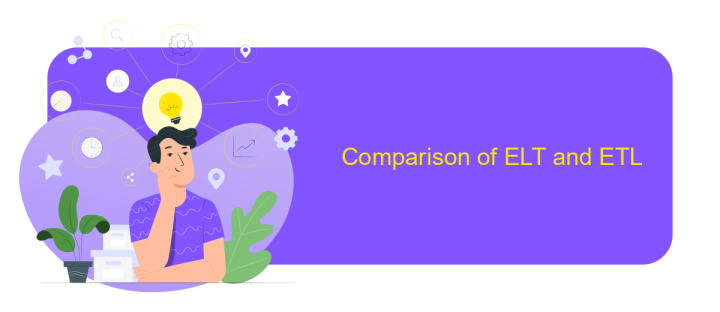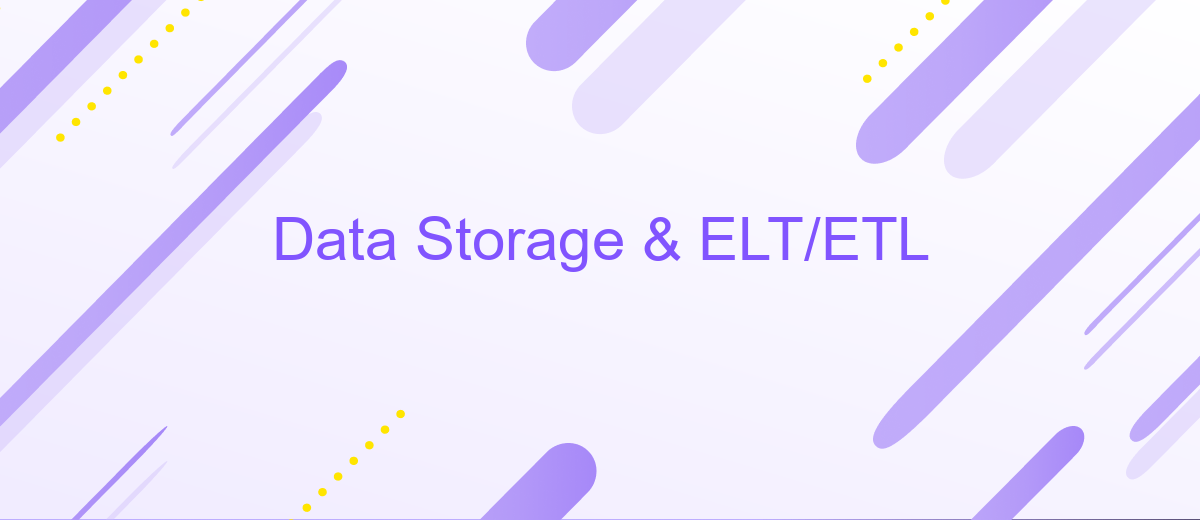Data Storage & ELT/ETL
Data storage and ETL/ELT processes are fundamental components in the realm of data management and analytics. As organizations accumulate vast amounts of data, the need for efficient storage solutions and robust data transformation techniques becomes critical. This article explores the intricacies of data storage options and the differences between ETL (Extract, Transform, Load) and ELT (Extract, Load, Transform) methodologies.
Introduction
Data storage and ETL/ELT processes are fundamental components in the modern data management landscape. These processes enable the efficient extraction, transformation, and loading of data, facilitating seamless data integration and analysis. As organizations increasingly rely on data-driven decision-making, the importance of robust data storage solutions and effective ETL/ELT processes cannot be overstated.
- Data Extraction: Collecting data from various sources.
- Data Transformation: Converting data into a usable format.
- Data Loading: Storing the transformed data into a data warehouse.
In today's interconnected world, integrating multiple data sources is crucial for comprehensive analytics. Services like ApiX-Drive simplify this process by automating data integration, allowing businesses to connect various applications and platforms effortlessly. By leveraging such tools, organizations can streamline their data workflows, ensuring that accurate and timely data is always available for analysis.
Data Storage

Data storage is a critical component in the data management ecosystem, providing a secure and efficient way to store vast amounts of data. It encompasses various technologies and methodologies, including databases, data lakes, and data warehouses. Each type of data storage solution is designed to meet specific needs, such as high-speed transactions, large-scale data analysis, or long-term data archiving. The choice of data storage depends on factors like data volume, access speed, and the nature of the data itself.
Integrating different data storage systems can be complex, but services like ApiX-Drive simplify this process. ApiX-Drive offers a user-friendly platform for setting up and managing data integrations between various applications and storage solutions. By automating data transfers and ensuring seamless connectivity, ApiX-Drive helps organizations maintain data consistency and integrity across multiple systems. This integration capability is essential for businesses aiming to leverage their data for advanced analytics and decision-making processes.
ELT and ETL Processes

ELT (Extract, Load, Transform) and ETL (Extract, Transform, Load) are two primary data processing methodologies used in data warehousing and integration. ETL involves extracting data from various sources, transforming it into a suitable format, and then loading it into a data warehouse. Conversely, ELT extracts data, loads it into the target system, and then performs the transformation within the data storage environment.
- Data Extraction: Both ETL and ELT begin with extracting data from multiple sources such as databases, APIs, and flat files.
- Data Transformation: In ETL, transformation occurs before loading, ensuring data is cleaned and formatted. In ELT, transformation happens after loading, leveraging the power of modern data storage systems.
- Data Loading: ETL loads the transformed data into the target system, while ELT loads raw data first, transforming it as needed within the target system.
Choosing between ETL and ELT depends on the specific requirements and infrastructure of an organization. Tools like ApiX-Drive can facilitate seamless data integration by automating the extraction and loading processes, making it easier to implement either approach effectively. ApiX-Drive offers a user-friendly interface and robust features that simplify the setup and management of data workflows, ensuring efficient data processing and integration.
Comparison of ELT and ETL

ELT (Extract, Load, Transform) and ETL (Extract, Transform, Load) are two fundamental data integration approaches used in data warehousing and analytics. The primary difference between them lies in the sequence of operations performed on the data. ETL involves extracting data from source systems, transforming it before loading into the target system, whereas ELT loads the raw data into the target system and then performs the necessary transformations.
Both methods have their own advantages and are suitable for different use cases. ETL is often preferred for traditional data warehousing projects where data transformation needs to be controlled and managed before loading. On the other hand, ELT is more suitable for modern cloud-based data warehousing solutions that can handle large volumes of raw data and perform transformations efficiently within the target system.
- ETL: Extract → Transform → Load
- ELT: Extract → Load → Transform
- ETL: Suitable for on-premises data warehouses
- ELT: Ideal for cloud-based data warehouses
Choosing between ELT and ETL depends on the specific requirements of the project, including data volume, transformation complexity, and the infrastructure in place. Tools like ApiX-Drive can simplify the integration process by automating data extraction and loading, making it easier to implement either approach based on your needs.
Conclusion
In summary, the effective management of data storage and the strategic implementation of ELT/ETL processes are crucial for modern businesses aiming to leverage data-driven insights. These methodologies not only ensure the efficient handling and transformation of large datasets but also enhance data accessibility and reliability. By adopting robust data storage solutions and integrating advanced ELT/ETL tools, organizations can significantly improve their decision-making processes and operational efficiency.
Moreover, leveraging integration services like ApiX-Drive can further streamline the data integration process, enabling seamless connectivity between various data sources and destinations. This facilitates real-time data synchronization and minimizes manual intervention, thereby reducing errors and saving valuable time. As businesses continue to evolve in the digital age, investing in comprehensive data management strategies and reliable integration services will remain pivotal to maintaining a competitive edge.
FAQ
What is the difference between ETL and ELT?
How can I automate ETL/ELT processes?
What are the common data storage options for ETL/ELT processes?
How do I ensure data quality in ETL/ELT processes?
What are the challenges of integrating multiple data sources in ETL/ELT?
Apix-Drive will help optimize business processes, save you from a lot of routine tasks and unnecessary costs for automation, attracting additional specialists. Try setting up a free test connection with ApiX-Drive and see for yourself. Now you have to think about where to invest the freed time and money!

